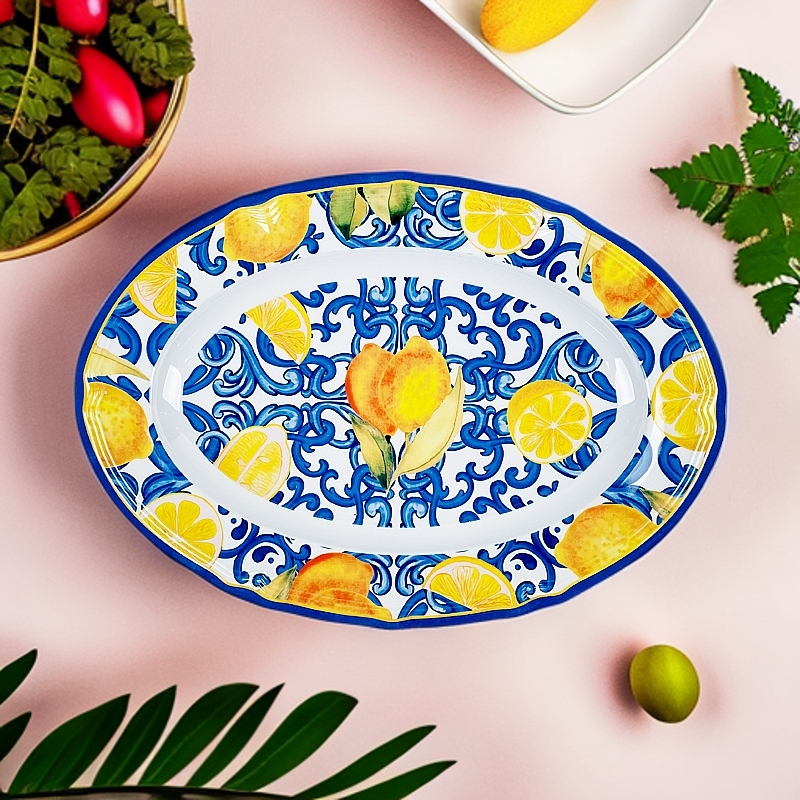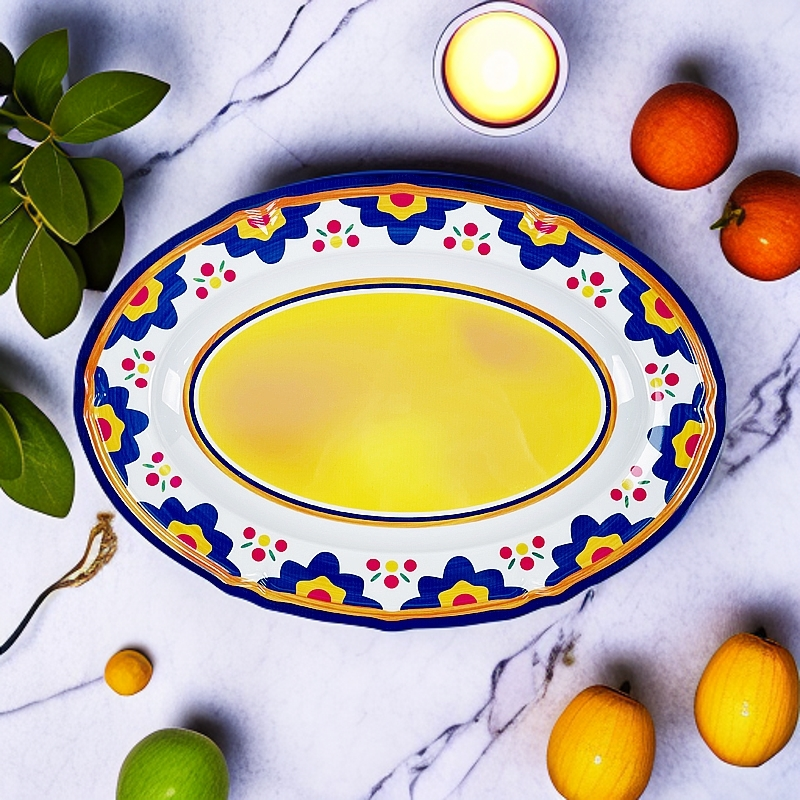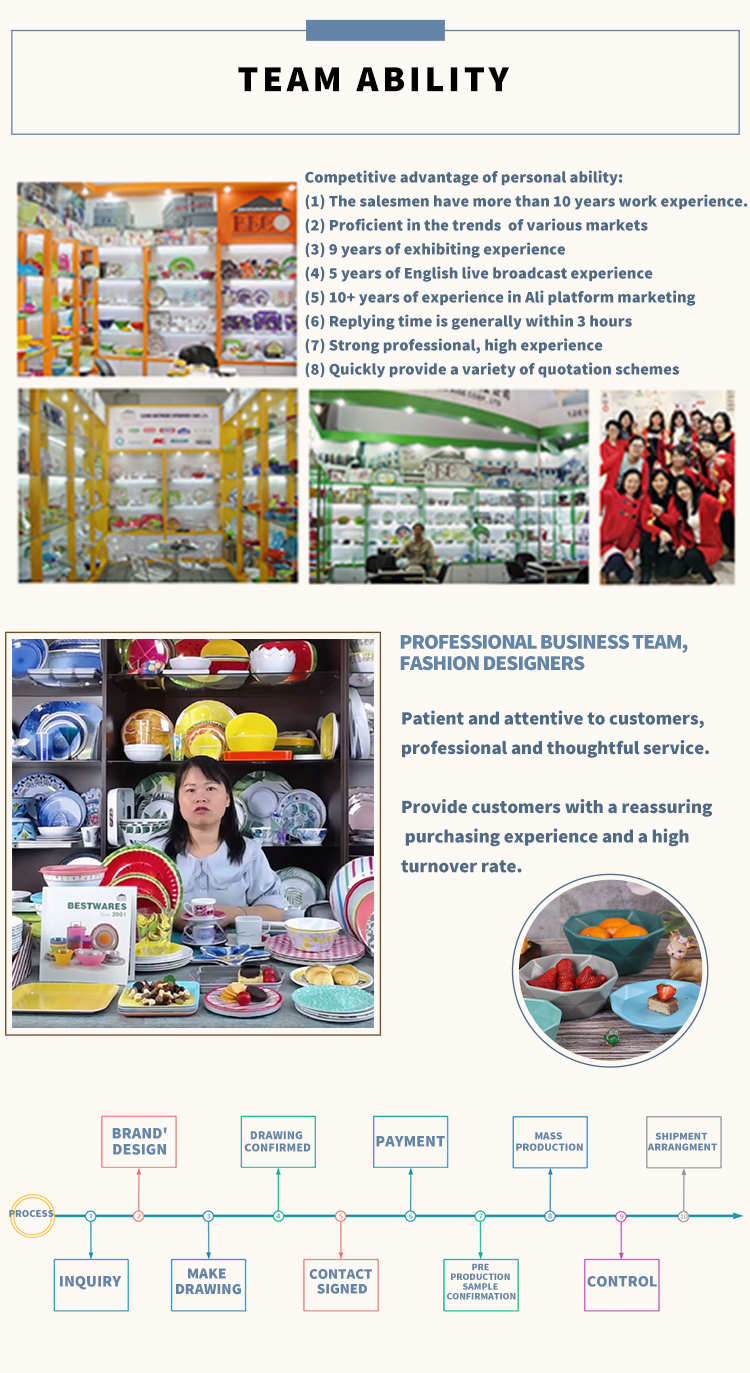When selecting tableware for your restaurant or foodservice business, the decision between melamine and traditional ceramic tableware can significantly impact both your costs and customer experience. While ceramic tableware has long been a popular choice, melamine offers distinct advantages that make it an increasingly preferred option for many businesses. In this article, we’ll compare melamine and ceramic tableware, highlighting the key benefits of melamine and the disadvantages of ceramic to help you make an informed decision for your business.
1. Durability: Melamine Outperforms Ceramic
One of the most significant advantages of melamine tableware is its durability. Melamine is a highly durable material that is resistant to breaking, chipping, and cracking. Unlike ceramic, which can easily shatter or chip when dropped, melamine retains its appearance even after extensive use. This makes melamine a more reliable and cost-effective option for high-volume businesses like restaurants, catering services, and cafeterias. The longer lifespan of melamine means you’ll need to replace your tableware less frequently, resulting in lower replacement costs over time.
2. Weight: Melamine is Lighter and Easier to Handle
Melamine is considerably lighter than ceramic, making it easier for staff to handle, transport, and stack. Ceramic tableware, on the other hand, can be heavy and cumbersome, especially when dealing with large plates and bowls. The lightweight nature of melamine reduces strain on staff during service and can improve efficiency in busy foodservice environments.
3. Cost-Effectiveness: Melamine is More Budget-Friendly
Melamine tableware is often more affordable than traditional ceramic, both in terms of initial investment and long-term maintenance. While high-end ceramic products can be expensive, melamine offers a more budget-friendly alternative without compromising on style or functionality. For businesses looking to maximize their budget while still providing high-quality tableware, melamine is an excellent choice. Additionally, because melamine is less prone to damage, businesses can save on replacement costs, which can add up over time with ceramic tableware.
4. Heat Resistance: Ceramic Has Limited Durability
Ceramic tableware, while aesthetically pleasing, has limitations when it comes to heat resistance. Ceramic items can crack or even break when exposed to extreme temperature changes, such as hot food or beverages being placed on cold plates. Melamine, however, is resistant to temperature variations, making it suitable for both hot and cold foods. That being said, melamine should not be used in microwaves or ovens, but it can still handle typical restaurant conditions without the risk of thermal damage.
5. Maintenance: Melamine is Easier to Care For
Melamine tableware is easier to maintain compared to ceramic. Melamine does not require the same delicate handling or special cleaning methods that ceramic does. It is dishwasher-safe and does not stain easily, even with heavy use. Ceramic, on the other hand, can be more prone to staining and may require more frequent maintenance to keep it looking pristine. The ease of cleaning melamine products helps save time in the kitchen and reduces labor costs.
6. Aesthetic Appeal: Ceramic Still Wins in Visual Appeal
While melamine offers a variety of colors and designs, ceramic tableware is often seen as more aesthetically appealing due to its refined, classic look. Ceramic can be glazed with beautiful patterns and colors, offering a more upscale dining experience. However, with the advent of modern printing techniques, melamine is increasingly available in a wide range of styles that can mimic the look of ceramic, providing businesses with a balance between aesthetics and practicality.
Conclusion: Making the Right Choice for Your Business
When choosing between melamine and traditional ceramic tableware for your business, it’s important to weigh the advantages and disadvantages of each material. Melamine stands out for its durability, cost-effectiveness, and ease of handling, making it an ideal choice for high-volume foodservice environments where durability and budget are key considerations. Ceramic, while aesthetically appealing, may not offer the same long-term value and practicality, especially for businesses with high turnover rates or that require frequent handling of tableware. Ultimately, melamine offers an excellent balance of functionality, style, and affordability, making it a smart choice for many foodservice businesses.



About Us


Post time: Dec-13-2024